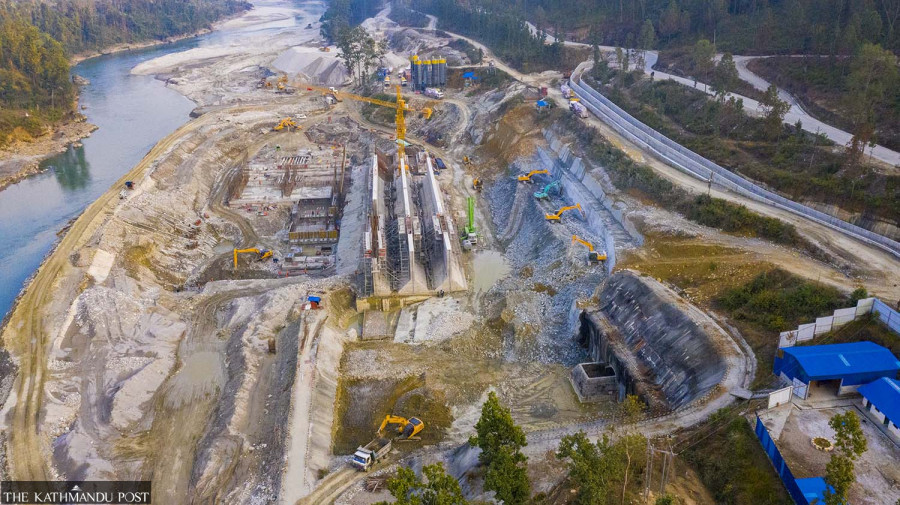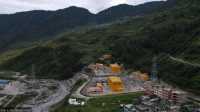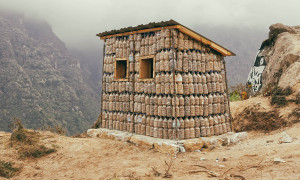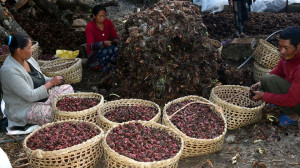Money
Bheri Babai Diversion Project stumbles despite early tunnel success
Tunnel completed ahead of schedule in 2019, but subsequent work stalled and overall progress remains at 69 percent after over a decade.
Tripti Shahi
In April 2019, the Bheri Babai Diversion Multipurpose Project in western Nepal—an ambitious irrigation and hydroelectricity scheme—achieved what was then hailed as a historic milestone. Engineers dug a 12-km tunnel using a tunnel-boring machine, a first in Nepal, one year ahead of the original March 2020 deadline.
The achievement was celebrated widely, with the Chinese contractor China Overseas Engineering Group (COVEC), which had won the contract for the first phase, lauded for finishing the tunnel nearly a year before schedule. The feat raised expectations that the project would soon provide irrigation and electricity to thousands of households in western Nepal.
But optimism has since turned to frustration. More than a decade after work began, the other components of the national pride project—built largely through manual construction—remain far from complete. Progress has reached only 69 percent overall.
The project was initially planned to begin in 2011-12, but it started actual work three years later in fiscal year 2014-15.
While the tunnel phase finished swiftly, the second and third phases have been dogged by delays.
Originally slated for completion in 2022-23, the deadline has now been extended to fiscal year 2027-28. Even with the extension, there is growing uncertainty about whether the project will meet the target.
Designed as one of Nepal’s largest irrigation ventures, the multipurpose project seeks to divert water from the Bheri River to the Babai River through the tunnel, ensuring year-round irrigation. A dam is being constructed at Chiple in Bheriganga Municipality, Surkhet, to channel water into the Babai River, which flows along the Surkhet–Bardiya border.
In addition to irrigating 51,000 hectares of farmland in Banke and Bardiya districts, the project is expected to generate 46 megawatts of electricity for the national grid.
Officials say the project has the potential to transform agriculture in Banke and Bardiya, boosting productivity and improving livelihoods, while also contributing significantly to the country’s hydropower supply. Yet despite the early tunnel breakthrough, subsequent construction has moved at a sluggish pace.
By the end of fiscal year 2024-25, cumulative progress against the contractual target stood at 68.63 percent, while financial progress was only 54.82 percent. The project’s own officials admit that performance has been unsatisfactory. The Covid pandemic was a major setback, halting work for nearly two years.
But even beyond the pandemic, a host of structural and procedural challenges have hampered progress.
According to project information officer Pawan Adhikari, slow budget approvals, lengthy procedures for programme revisions, and delays in securing environmental clearance for transmission line construction have been major stumbling blocks.
The import of heavy machinery, spare parts, and construction materials has also faced prolonged delays, even in cases where the goods qualified for tax concessions under the Electricity Act. He said that weak inter-agency coordination and inadequate cooperation from customs authorities have worsened the problem.
Local resistance has created further hurdles. Officials report frequent obstructions by communities living near the project site, including vandalism, forced stoppages, and demands for compensation. Although security forces have been deployed in the area, project managers describe the arrangements as insufficient.
Compensation disputes for encroached government land and structures built on it have also slowed work. Locals argue that the absence of a clear policy for land acquisition, difficulties with ownership transfers, and inconsistencies in federal government rules have complicated the process. Officials acknowledge that these issues remain unresolved.
The project has also struggled with a shortage of specialised technical teams able to troubleshoot problems quickly, and has suffered from limited emphasis on technology transfer, research, and innovation. Work inside forests and protected areas has faced additional procedural barriers, further delaying progress.
Construction, however, continues in parts of the project area. At the dam site in Chiple in ward 11 of Bheriganga Municipality, spillways and stilling basin structures for bays 1 and 2 are under development, with slope cutting and concreting ongoing for two of the six stilling basin bays. Intake gravel traps and forebays are also being built.
At the powerhouse site, excavation has been completed, foundations have been tested, and slope work is about to begin. Following design approval, slope concreting for spillway piers in bays 1 and 2 has already been finished.
Project officials report that hydromechanical structures have received design clearance, and equipment for the electromechanical component has already arrived at the site. A detailed survey report on the transmission line has been submitted to the Ministry of Forests and Environment for approval.
So far, the project has spent Rs18.19 billion. In the last fiscal year alone, Rs1.8 billion was allocated, of which Rs1.71 billion was spent. The project achieved 98 percent of its physical and 95.42 percent of its financial targets during that year. Still, with the total project cost estimated at Rs33.19 billion, much remains to be done.
Land acquisition has also lagged.
Only 15.79 hectares of the 33 hectares required have been secured. The process to acquire the remaining land is still ongoing.
For now, the Bheri Babai Diversion Project is a case study in Nepal’s contrasting development narrative: an engineering triumph in completing a tunnel ahead of schedule, overshadowed by years of delays, unresolved disputes, and systemic inefficiencies.




 9.12°C Kathmandu
9.12°C Kathmandu













%20(1).jpg&w=300&height=200)
